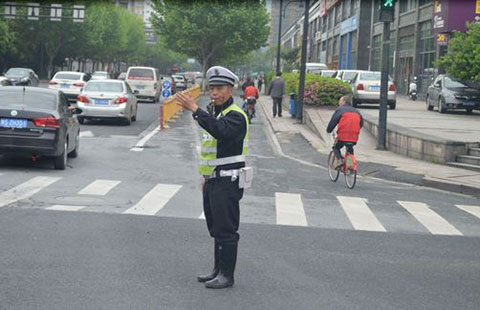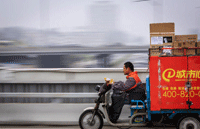China on orange alert for blizzards
(chinadaily.com.cn) Updated: 2012-11-04 11:03BEIJING - China on Sunday continued to warn against blizzards, hiking the alert to the country's second-highest level over snowstorms that are expected to affect northern regions over the next few days.
On Sunday and Monday, heavy snow will hit central and eastern parts of Inner Mongolia autonomous region, northern and western parts of Hebei province, and most parts of Beijing, with some regions seeing snowstorms reaching 30 mm, the National Meteorological Center said.
The center at 6 am issued an orange alert following Saturday's issuance of a blue alert, the weakest on China's four-tier color-coded warning system for blizzards.
The blizzards have caused a shutdown of expressway sections in Beijing, Hebei, Shanxi and Inner Mongolia, including the Beijing-Tibet and the Qingdao-Yinchuan expressways, the Ministry of Transport said on Sunday.
An official from the ministry's road network center gave no sure time for the reopening of the affected roads, but said the ministry will monitor the situations closely and provide timely updates on road conditions.
Meanwhile, rain, sleet and snow are forecast to fall in most parts of north China, regions along the Yellow and Huaihe rivers, and some parts of northeast China from Sunday to Tuesday.
The center also issued a blue alert on a cold snap in east China, which is expected to bring gales and drop temperatures by 6 to 8 degrees Celsius in Inner Mongolia's east and most eastern costal areas over the coming two days.
China has a four-tier color-coded snow warning system: red, orange, yellow and blue. Red is the most serious level.
The Ministry of Public Security held a televised conference to start the emergency system to control road traffic in order to cope with the blizzard in northern China.
The ministry urged departments at all levels to prepare for the severe weather using experience gained through previous operations and further improve the emergency system so as to avoid long-term traffic jams and major road accidents.
- About 30 workers buried alive by landslide in east China
- Express delivery firms in Shenzhen promise to outdate tricycles
- China renews blue alert for rainstorm
- IMF: Economic restructuring 'desirable'
- Doctor severely wounded by ex-patient
- Speedier delivery to aid transplants
- 118 flights delayed by storms in Guangzhou
- Taiwan's participation in WHA based on One China principle
- Beijing's five-year plan: Cut population, boost infrastructure
- Inspection teams to cover all of military








